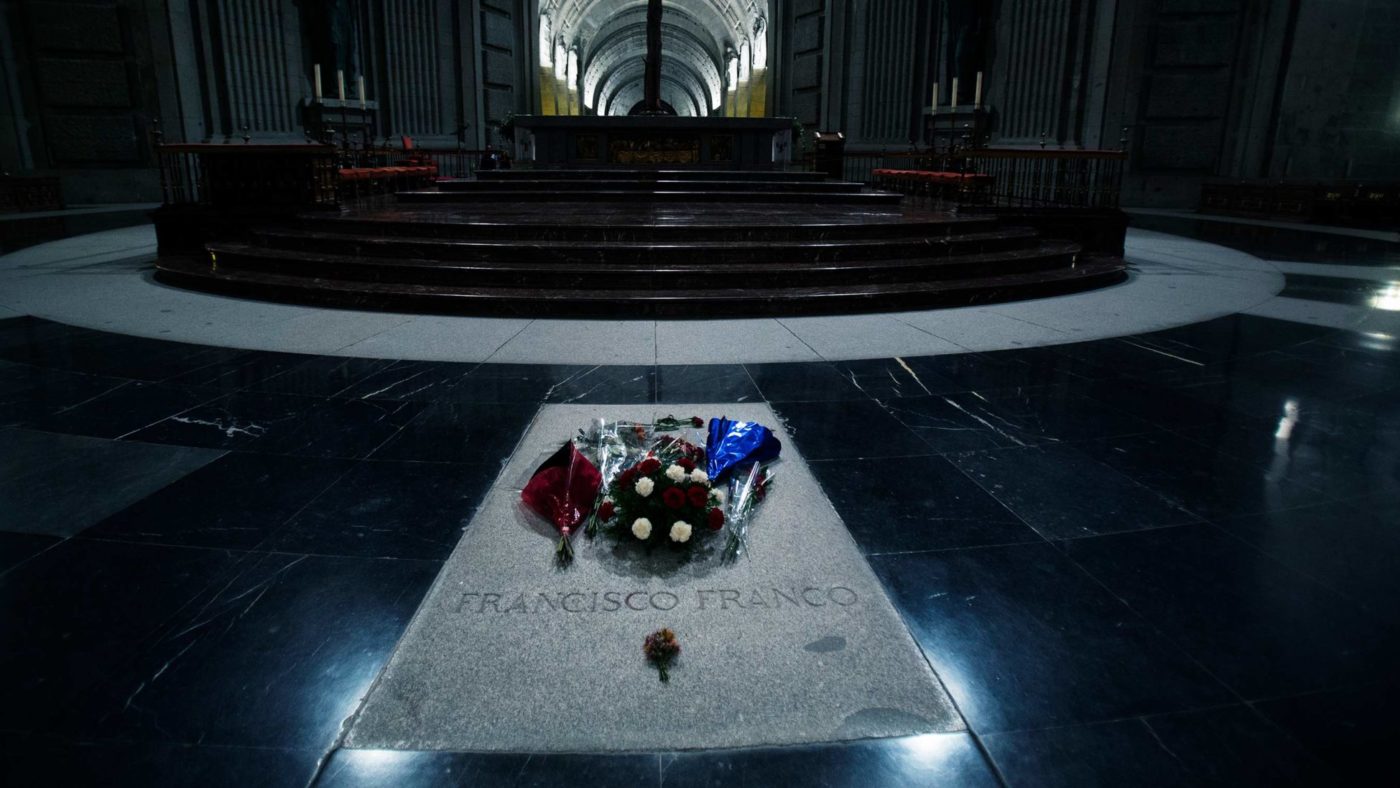“Spaniards: Franco is dead”.
These words, uttered on TV by prime minister Carlos Arias Navarro back in 1975, brought an end to almost four decades of dictatorship in Spain and kicked off the most prosperous period in the country’s history. In the 45 years since, a debate has raged over whether Western Europe’s last dictator should still be buried in The Valley of the Fallen, a state-owned vast mausoleum visited by hundreds of thousands of people every year.
Fortunately, that argument will be over soon. On Tuesday Spain’s Supreme Court ruled in favour of Pedro Sánchez’s government, allowing the exhumation of the dictator’s remains and their transfer to a modest cemetery in the north of Madrid, the resting place of his wife and several of the caudillo’s senior officials.
The decision comes after Franco’s heirs took Spain’s government to court over an executive order that provided a legal basis for the exhumation and relocation of his remains. In their appeal, Franco’s family demanded that, if the Supreme Court allowed the exhumation, the body should be taken to Madrid’s cathedral – that idea was anathema to the Spanish government, who were not prepared to give the former ruler pride of place in one of the capital’s most important buildings.
Contrary to what some may believe, the Supreme Court’s ruling has not caused stir or division among the Spanish population. A large fraction either support the exhumation or remain indifferent towards it. Those who vote for left-wing parties overwhelmingly favour a decision they consider full of symbolism and historical meaning. It is true that most conservatives and a fraction of liberal-democrat voters oppose the measure, albeit half-heartedly, as they regard it a waste of time and money. But save for a few far-right nostalgics who might take to the streets, there will not be any great public uproar at the proposal.
Beyond the procedural details, the bigger question is how it was ever possible that a leader almost universally regarded as a monster could still be buried in such opulent surroundings. The answer lies in the way Spain transitioned into democracy in the aftermath of Franco’s death.
Unlike some other strongmen, Franco was not removed in a violent coup or a popular revolution. Instead, he died of heart failure, leaving the country in a relatively good economic situation thanks to two decades of continuous economic growth. King Juan Carlos, who had been appointed by Franco as his successor, devised a plan to establish a parliamentary monarchy that didn’t involve a radical, overnight rupture with Franco’s regime.
This was done in part to avoid a military coup by a fraction of the military who strongly opposed the establishment of a democratic system based on political pluralism. The experiment succeeded inasmuch as a fully-fledged democracy was established in Spain in a short period of time. However, a few issues remained outstanding, the ostentatious burial place of the dictator among them.
Since Pedro Sánchez came to power last year, he made Franco’s exhumation a priority, in a clear bid to win back disaffected traditional left-wingers who had switched from the socialists to the populist upstarts of Podemos.
This strategy is unlikely to have much resonance beyond younger voters, who tend to be the most ideological and politicised fraction of the electorate. The average voter, by contrast, does not consider the dictator’s exhumation a top concern when she has to decide whom to vote for in the next election. And for good reason: whatever ends up happening with Franco’s remains will not have any measurable impact on the daily lives of most citizens.
Regardless of what motivated the decision to exhume the remains now and not earlier (Spain’s Socialist Party has been in office for 23 of the last 37 years), Sanchez’s government is really only correcting what has long been an anomaly.
In fact, there are few examples of twentieth-century European dictators that enjoy this privilege. Mussolini’s body is buried in a family crypt in a modest cemetery in Predappio, Romagna; Salazar’s remains rest in a small cemetery in his hometown; communist satrap Nicolae Ceausescu and his wife were buried in a public cemetery in Bucharest after being executed in 1989. The only exception is Tito, who ruled Yugoslavia from WWII until his death in 1980, whose resting place is a mausoleum in Belgrade.
Even though the Supreme Court’s decision paves the way for the exhumation and transfer of Franco’s remains to a different location, there are still some obstacles for Sánchez’s government to be able to carry out its plans, especially if it aims to do so before the November election. Franco’s heirs are planning to appeal to the Constitutional Court, an organ outside Spain’s judiciary that can override Supreme Court’s rulings. Furthermore, the government will need the approval of the Catholic church, although the Vatican has already hinted that it won’t interfere with the decision.
Be that as it may, it seems Franco’s family are fighting a losing battle. Soon Spain will lose its dubious distinction of being the only Western European country to offer a resplendent resting place to its most brutal 20th century autocrat.
CapX depends on the generosity of its readers. If you value what we do, please consider making a donation.


